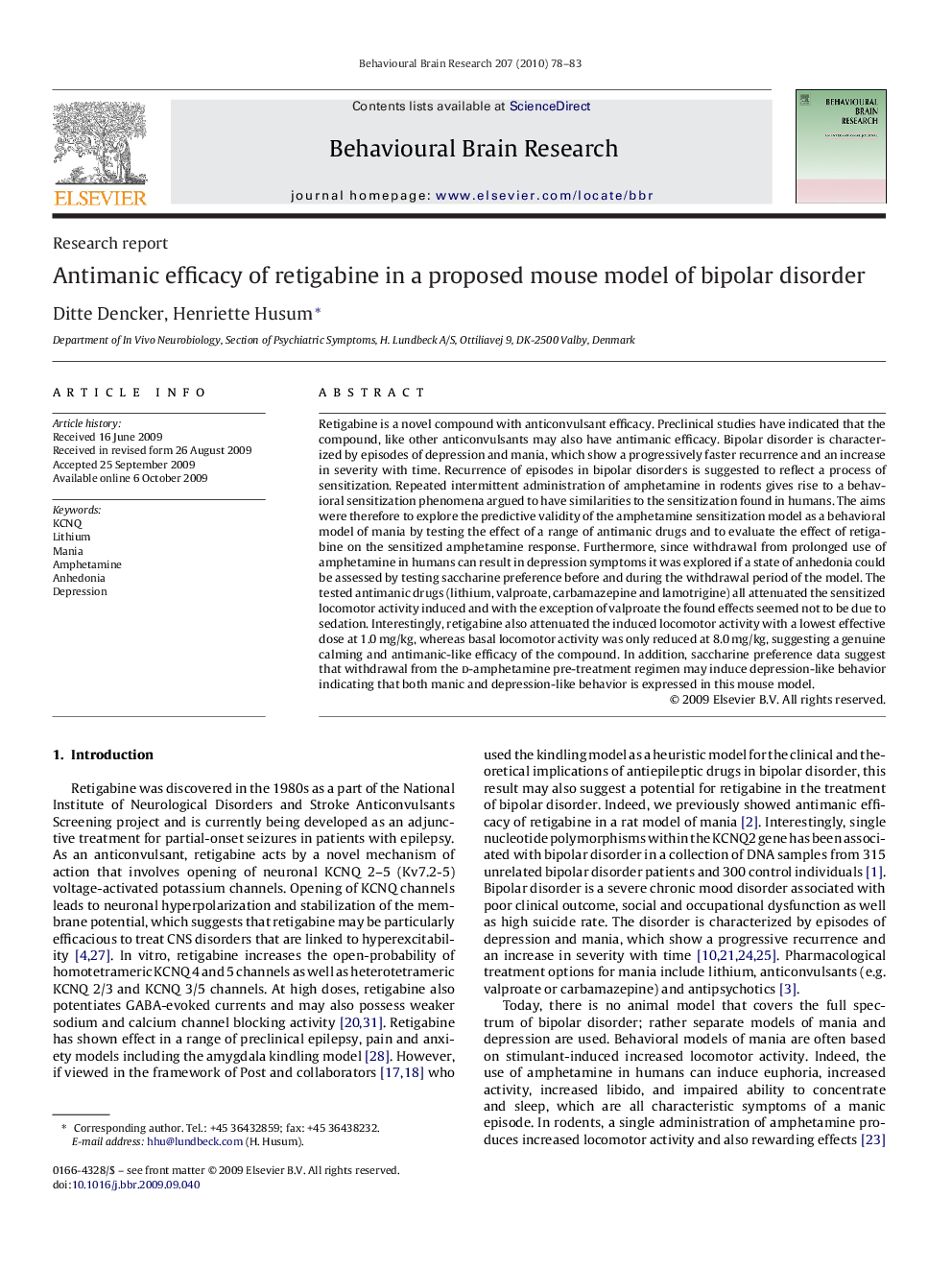| Article ID | Journal | Published Year | Pages | File Type |
|---|---|---|---|---|
| 4314327 | Behavioural Brain Research | 2010 | 6 Pages |
Retigabine is a novel compound with anticonvulsant efficacy. Preclinical studies have indicated that the compound, like other anticonvulsants may also have antimanic efficacy. Bipolar disorder is characterized by episodes of depression and mania, which show a progressively faster recurrence and an increase in severity with time. Recurrence of episodes in bipolar disorders is suggested to reflect a process of sensitization. Repeated intermittent administration of amphetamine in rodents gives rise to a behavioral sensitization phenomena argued to have similarities to the sensitization found in humans. The aims were therefore to explore the predictive validity of the amphetamine sensitization model as a behavioral model of mania by testing the effect of a range of antimanic drugs and to evaluate the effect of retigabine on the sensitized amphetamine response. Furthermore, since withdrawal from prolonged use of amphetamine in humans can result in depression symptoms it was explored if a state of anhedonia could be assessed by testing saccharine preference before and during the withdrawal period of the model. The tested antimanic drugs (lithium, valproate, carbamazepine and lamotrigine) all attenuated the sensitized locomotor activity induced and with the exception of valproate the found effects seemed not to be due to sedation. Interestingly, retigabine also attenuated the induced locomotor activity with a lowest effective dose at 1.0 mg/kg, whereas basal locomotor activity was only reduced at 8.0 mg/kg, suggesting a genuine calming and antimanic-like efficacy of the compound. In addition, saccharine preference data suggest that withdrawal from the d-amphetamine pre-treatment regimen may induce depression-like behavior indicating that both manic and depression-like behavior is expressed in this mouse model.
